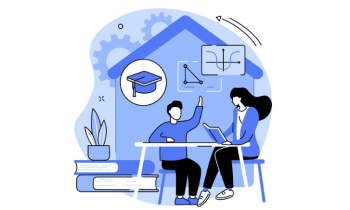The next generation of EdTech tools are incorporating AI features to help make the learning experience more engaging and personal for pupils, whilst reducing workloads for teachers, and enabling them to effectively monitor student progress and development.
If you’re wondering how that works, the answer is simple.
AI is the perfect sidekick for teachers, providing them with a knowledgeable teaching assistant who can take over some tasks and free their time to focus on what’s important — giving pupils more attention.
For example, grading papers and working on other admin tasks also becomes easier once there is a trusty assistant to count on. Providing feedback is just as effective, especially when it’s in the form of a personal message.
Powered by humans
AI has incredible potential, but it works best when powered by the human element. Many teachers might be hesitant to explore it, but it’s good to note that this technology will not take over their role — it will only enhance and revolutionise teaching and learning.
For this to happen, learning management systems will have to evolve into intelligent learning platforms, which use AI to make teachers’ lives easier and create a more enjoyable online learning experience for pupils. Let’s go over some examples:
Task automation
Some of the most time-consuming tasks for teachers are creating lessons, grading work, sending messages to their pupils and enrolling them in classes.
Luckily, task automation has changed the way teachers go about their daily activities. Instead of enrolling children in classes or sending messages manually, they can schedule those actions in the school learning management system (LMS).
Additionally, by planning lessons through an automated system, this frees up some time for teachers to focus on more meaningful tasks such as one-to-one support for pupils.
Through AI, teachers will be able to upload all learning materials such as text files, videos, images, animations, and other types of documents. Then, the LMS will filter and sort them into classes ready for pupils.
Thanks to task automation, pupils can get answers to their questions from a chatbot that is configured in advance. Voice recognition has also been an increasingly popular trend as it provides pupils with instant answers.
All they need to do is ask questions such as “Alexa, what’s my homework for today?” but teachers can also get updates on the go, a key feature of an intelligent learning platform.
Adaptive learning
Every pupil is different, from their preferences to their individual goals and learning pace. The standardised model of learning is not ideal for everyone.
Consequently, adaptive learning has supported teachers by personalising the learning journey and ensuring that each student gets a custom learning path.
E-learning systems are already very effective at providing content that ensures higher levels of engagement and understanding. When enrolling in a class, the LMS will assess the student’s level of knowledge and only shows the lessons if the score is satisfactory for the teacher.
Yet, AI takes things a step further and dynamically adapts that content. This equals less effort on the teachers’ part and more extraordinary achievements for pupils.
The recommendations system considers personal goals, making learning more focused on the individual.
Learning recommendations
The concept of personalised recommendations has been around for some time already, Netflix being a good example.
In education, recommendations are based on goals that teachers set in advance, and these can represent lessons or certificates of completion.
For example, educators will set up goals for their pupils, such as “learn geography basics”.
That same goal is tied to other competencies like “fauna and flora”, “continents”, and “population”.
Next, the learning platform will recommend lessons to pupils based on their existing skills, and provide additional assistance to progress further.
Furthermore, the system can detect students at risk, allowing teachers to intervene.
There is no doubt that AI systems will power the future of teaching and learning. Thanks to an intelligent learning platform, educators save time on their tasks and become proactive while encouraging young learners to achieve their goals.
Classes become more exciting and interactive for students as they get suitable learning recommendations at the right time.
Graham Glass is the CEO of Cypher Learning




_945_573_80_int_s_c1_c_t.jpg)





